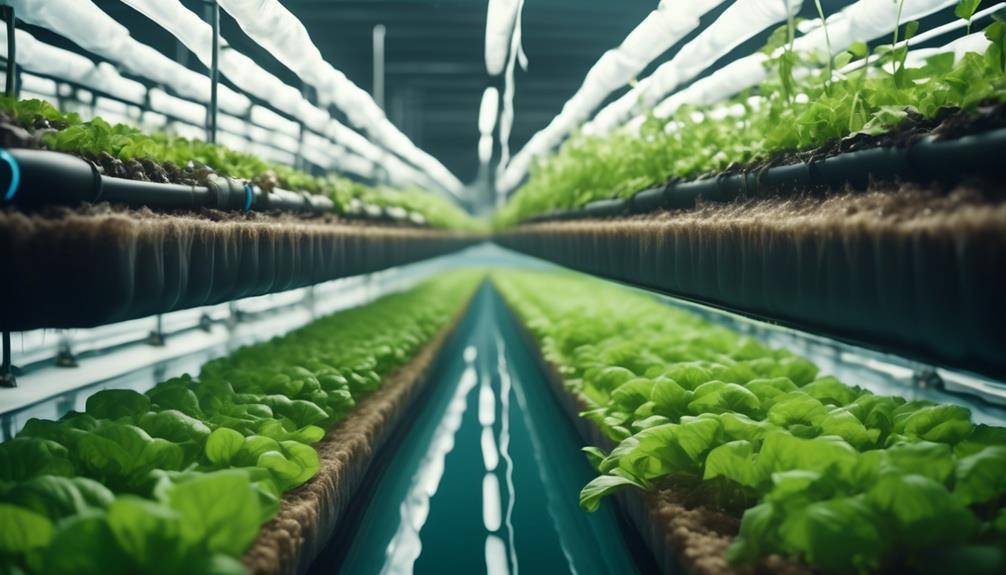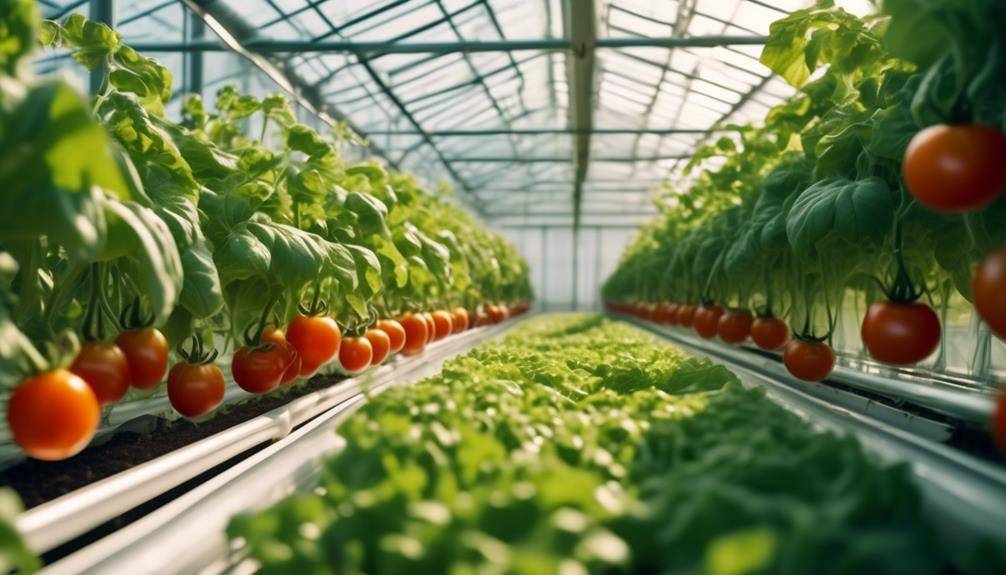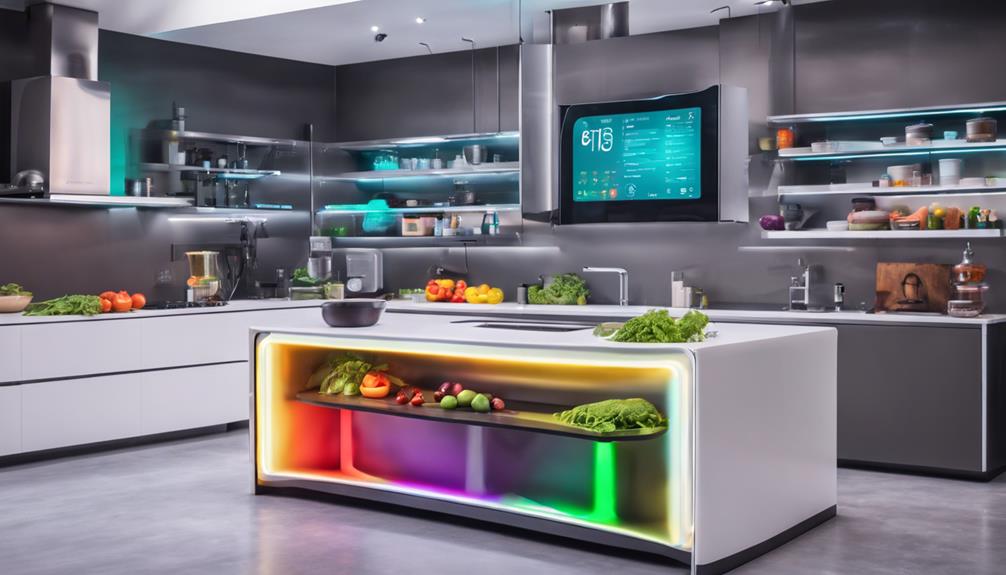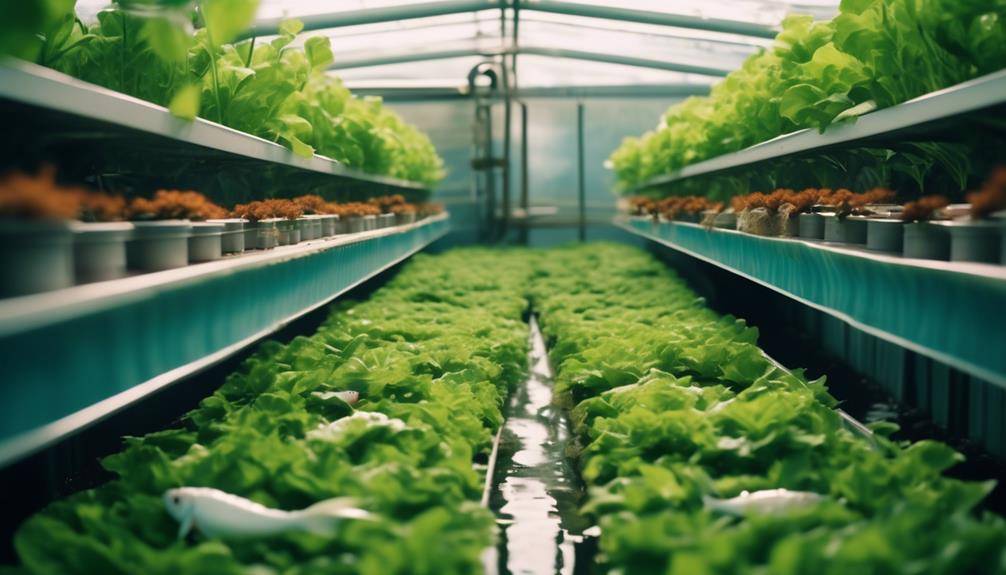Which Is Better; Hydroponics And Aquaponics Farming Systems Comparison

Hydroponics And Aquaponics Farming Systems; Imagine stepping into a lush, thriving garden where rows upon rows of vibrant plants flourish under the careful watch of their grower. The air is thick with the earthy scent of fresh produce, and the gentle sound of flowing water soothes your senses.
In this discussion, we will explore the fascinating world of hydroponics and aquaponics farming systems, comparing their water usage, nutrient delivery, plant growth and yield, fish cultivation, cost analysis, crop variety, pest and disease control, energy efficiency, and scalability and commercial viability. As we delve into the intricacies of these innovative farming methods, you will uncover the advantages and drawbacks of each, ultimately gaining a deeper understanding of which system may be best suited for your needs.
Water Usage
Hydroponics and aquaponics farming systems differ in their water usage, with hydroponics typically requiring less water than aquaponics due to the absence of fish waste. Water conservation is a crucial aspect of sustainable farming, and hydroponics offers several advantages in this regard.
One key reason for the lower water usage in hydroponics is the absence of fish waste, which is a significant contributor to water consumption in aquaponics. In aquaponics, fish waste accumulates in the water and requires constant filtration and replenishment. This not only increases water usage but also necessitates careful balancing of nutrients to maintain optimal conditions for both the fish and plants. In hydroponics, however, water is recirculated within a closed system, minimizing wastage and reducing the need for constant replenishment.
In addition to the absence of fish waste, hydroponics also allows for more efficient irrigation techniques. Traditional soil-based agriculture often suffers from water loss due to evaporation, runoff, or uneven distribution. Hydroponics, on the other hand, utilizes irrigation systems such as drip irrigation or nutrient film technique (NFT) that deliver water directly to the plant roots in a controlled manner. This targeted approach ensures maximum water absorption by the plants and minimizes wastage.
Furthermore, hydroponics systems can be equipped with sensors and monitoring devices to measure and regulate water usage. These technologies enable farmers to optimize irrigation schedules and adjust nutrient solutions based on real-time data. By fine-tuning the irrigation process, water conservation can be further enhanced, minimizing unnecessary usage and reducing environmental impact.
Nutrient Delivery
To understand the difference in nutrient delivery between hydroponics and aquaponics, it is important to consider the methods used in each system. In hydroponics, a nutrient solution is directly delivered to the plants, providing them with the necessary elements for growth. On the other hand, aquaponics relies on fish waste as a source of nutrients, which is then converted by bacteria into a form that can be absorbed by the plants. This distinction in nutrient delivery methods can have implications for the efficiency of nutrient absorption and overall plant health in each system.
Nutrient Solution in Hydroponics
The efficient delivery of nutrient solutions is crucial in hydroponic systems to ensure optimal plant growth and development. In hydroponics, the nutrient solution acts as the primary source of essential nutrients for the plants. Here are three key aspects to consider when it comes to nutrient solution formulation in hydroponics:
- Nutrient balance: Creating a well-balanced nutrient solution is essential to meet the specific nutrient requirements of different plant species. By carefully formulating the nutrient solution, hydroponic growers can provide plants with the precise amounts of macronutrients (nitrogen, phosphorus, and potassium) and micronutrients (iron, manganese, zinc, etc.) they need for healthy growth.
- pH control: Maintaining the correct pH level of the nutrient solution is crucial for nutrient uptake by the plants. pH levels that are too high or too low can lead to nutrient deficiencies or toxicities. Regular monitoring and adjustment of pH levels ensure optimal nutrient absorption and plant health.
- Nutrient availability: Hydroponic systems provide plants with readily available nutrients, eliminating the need for them to extract nutrients from soil. This allows for faster and more efficient nutrient uptake, promoting accelerated growth and higher yields compared to traditional soil-based cultivation methods.
Fish Waste in Aquaponics
By utilizing the natural waste produced by fish, aquaponics systems provide a sustainable and efficient method of delivering essential nutrients to plants. In aquaponics, fish behavior plays a crucial role in the nutrient cycling process. As the fish consume food, they produce waste in the form of ammonia through their gills and excretion. This waste is rich in nitrogen, which is an essential nutrient for plant growth.
Beneficial bacteria in the aquaponics system convert the toxic ammonia into nitrites and then into nitrates, a form of nitrogen that plants can readily absorb. The plants take up these nitrates through their roots, effectively removing the excess nutrients from the water and providing a natural filtration system. This symbiotic relationship between fish and plants creates a self-sustaining cycle of nutrient delivery in aquaponics.
Nutrient Absorption Efficiency
Aquaponics systems demonstrate high nutrient absorption efficiency due to the symbiotic relationship between fish and plants. This unique system allows for optimal nutrient uptake rate and root development, resulting in healthy and thriving plants. Here are three key factors that contribute to the nutrient absorption efficiency in aquaponics systems:
- Fish waste: The waste produced by the fish in the system serves as a valuable source of nutrients for the plants. As the fish excrete ammonia, it is converted into nitrites and then nitrates by beneficial bacteria. These nitrates are then readily absorbed by the plants through their root systems.
- Constant nutrient supply: In aquaponics, the nutrient-rich water is continuously circulated through the system, ensuring a constant supply of nutrients for the plants. This allows for a consistent and efficient uptake of essential elements needed for growth.
- Enhanced root development: The constant exposure to nutrient-rich water stimulates root growth in plants. With an abundance of nutrients readily available, the roots can grow longer and denser, increasing the surface area for nutrient absorption.
Plant Growth and Yield
In hydroponics and aquaponics farming systems, plant growth and yield are influenced by various factors. One significant factor to consider is plant spacing. In hydroponics, plants are typically spaced closer together compared to traditional soil-based farming. This is because hydroponic systems provide plants with all the necessary nutrients directly to their roots, eliminating the need for extensive root systems. The close spacing allows for maximized use of space and efficient use of resources.
Furthermore, lighting requirements play a crucial role in plant growth and yield. Both hydroponics and aquaponics systems require artificial lighting to provide the necessary light energy for photosynthesis. The intensity, duration, and quality of light are all essential factors to consider. Plants in both systems require a specific amount of light to produce energy and grow efficiently. In hydroponics, artificial lighting is carefully adjusted to provide the necessary spectrum and intensity of light for optimal growth. In aquaponics, natural lighting is supplemented with artificial lighting to ensure that plants receive adequate light for photosynthesis.
Research has shown that both hydroponics and aquaponics systems can produce higher yields compared to traditional soil-based farming. This is primarily attributed to the controlled environment and optimized conditions provided by these systems. Factors such as nutrient availability, water quality, and temperature can be carefully regulated, resulting in improved plant growth and higher yields.
Fish Cultivation
When it comes to fish cultivation in hydroponics and aquaponics farming systems, several important factors need to be considered. First, the selection of fish species plays a crucial role in the overall success of the system. Certain species, such as tilapia and trout, are known for their fast growth and adaptability to controlled environments. Second, the ability of fish to absorb and utilize nutrients efficiently is essential for maintaining a balanced ecosystem. Lastly, maintaining optimal water quality is of utmost importance to ensure the health and well-being of the fish, as well as the overall system.
Fish Selection
Consideration of the appropriate fish species is crucial in both hydroponics and aquaponics farming systems. When selecting fish for your farming system, there are several factors to consider:
- Fish compatibility: It is essential to choose fish species that can thrive in the environment you have created. Consider factors such as water temperature, pH levels, and oxygen levels. Some fish species, like tilapia, are more tolerant of fluctuating water parameters, making them suitable for aquaponics systems.
- Fish feeding: Different fish have different dietary requirements. Ensure that the fish species you select can be fed with the available food sources in your system. Some fish, like trout, require a high-protein diet, while others, like catfish, have a more omnivorous diet.
- Disease resistance: Selecting fish species that are known for their disease resistance can help minimize the risk of outbreaks and ensure the health of your fish population.
Nutrient Absorption
To optimize nutrient absorption in fish cultivation, it is crucial to provide a balanced and nutrient-rich diet that meets their specific dietary requirements. Fish have a remarkable ability to absorb nutrients from their diet efficiently, and this is influenced by several factors, including their nutrient uptake efficiency and root structure. Nutrient uptake efficiency refers to the fish’s ability to absorb and utilize the nutrients present in their diet.
Different species of fish have varying efficiency levels, with some being more efficient than others. Additionally, the root structure of fish plays a significant role in nutrient absorption. Fish with well-developed root structures have a larger surface area for nutrient absorption, allowing them to take in more nutrients from their surroundings. By understanding and optimizing these factors, farmers can enhance the nutrient absorption capabilities of their fish, leading to healthier and more productive aquaponics systems.
Water Quality Control
With a focus on fish cultivation in aquaponics systems, the next aspect to explore is the crucial factor of water quality control. In order to maintain optimal conditions for fish health and growth, it is essential to actively monitor and regulate the water quality in the aquaponics system. Here are three key aspects of water quality control in aquaponics:
- Water quality monitoring: Regular testing of parameters such as pH, ammonia, nitrate, and dissolved oxygen levels is necessary to ensure a healthy aquatic environment. This monitoring allows for prompt detection of any deviations from the desired range, enabling timely corrective actions.
- pH regulation: Maintaining the appropriate pH level is vital for fish and plant health. Fluctuations in pH can stress fish and impair their growth. By adjusting the pH using techniques such as adding buffers or adjusting the alkalinity levels, the aquaponics farmer can create an optimal environment for both the fish and plants.
- Nutrient balance: Proper nutrient balance is essential for the overall health of the aquaponics system. Monitoring the nutrient levels and adjusting the feed input accordingly ensures that the fish receive adequate nutrition while preventing the accumulation of excess nutrients that can lead to water pollution.
Cost Analysis
When comparing the cost analysis of hydroponics and aquaponics farming systems, it is imperative to evaluate the financial implications of each method. One of the key advantages of both hydroponics and aquaponics is their ability to conserve water, which plays a significant role in the economic feasibility of these systems.
In hydroponics, water conservation is achieved through the recirculation of nutrient-rich water. By continuously reusing the water, hydroponic systems minimize water waste and reduce the need for excessive irrigation. This not only helps to lower water bills but also contributes to a more sustainable and environmentally friendly farming practice.
Aquaponics takes water conservation a step further by integrating aquaculture and hydroponics. In this system, fish waste is used as a natural source of nutrients for the plants, creating a closed-loop system where water is continuously recycled. This eliminates the need for synthetic fertilizers and significantly reduces water usage compared to traditional soil-based farming methods.
When considering the economic feasibility of hydroponics and aquaponics, it is important to take into account the initial investment costs. Hydroponic systems typically require a significant upfront investment for equipment such as grow lights, pumps, and nutrient solutions. However, the long-term operating costs, including water and fertilizer, tend to be lower compared to traditional farming methods.
Aquaponics, on the other hand, requires additional infrastructure for the integration of aquaculture and hydroponics. This includes fish tanks, filtration systems, and additional monitoring equipment. While the initial investment may be higher, aquaponics has the potential for increased profitability due to the dual production of both plants and fish.
System Complexity
When comparing hydroponics and aquaponics farming systems, one key aspect to consider is the system complexity. The system setup for both hydroponics and aquaponics can be intricate and require careful planning and execution. Additionally, there is a learning curve involved in understanding the specific requirements and management of each system. Understanding the complexity of these systems is crucial in determining the feasibility and practicality of implementing them in agricultural practices.
System Setup
How does the complexity of hydroponics and aquaponics farming systems compare in terms of system setup? Let’s take a closer look:
- Hydroponics System Setup:
- Advantages: Hydroponics systems are relatively simple to set up compared to aquaponics systems. They require less equipment and fewer resources, making them more accessible for beginners.
- Disadvantages: However, hydroponics systems still need careful monitoring and maintenance. The nutrient solution needs to be properly balanced, and the pH levels must be regularly adjusted. Additionally, hydroponics systems rely on synthetic nutrients, which can be costly and environmentally unfriendly.
- Aquaponics System Setup:
- Advantages: While aquaponics systems may be more complex initially, they offer a sustainable and self-sufficient farming solution. The combination of fish farming and hydroponics creates a symbiotic relationship where fish waste provides natural nutrients for the plants.
- Disadvantages: Aquaponics systems require additional components like fish tanks, filters, and aeration systems. The balance between fish and plant health can be delicate, requiring careful monitoring and adjustments. Moreover, the initial setup cost of an aquaponics system is usually higher than that of a hydroponics system.
Learning Curve
In terms of system complexity, the learning curve for hydroponics and aquaponics farming systems varies due to their distinct setups and requirements. When it comes to hydroponics, the learning techniques primarily involve understanding the nutrient solution composition and pH balance, as well as the management of water and nutrient levels.
The simplicity of the hydroponic setup allows for easier knowledge retention and quicker mastery of the system. On the other hand, aquaponics requires a deeper understanding of both hydroponics and aquaculture. Not only do you need to comprehend the hydroponic aspects, but you also need to learn about fish care, water quality management, and the symbiotic relationship between fish and plants. This additional complexity may result in a steeper learning curve and longer time for knowledge retention in aquaponics.
Maintenance Requirements
To effectively maintain hydroponics and aquaponics farming systems, it is essential to implement regular monitoring and adjustment protocols. By following these protocols, you can ensure the optimal functioning of your farming systems and maximize their productivity. Here are three key maintenance requirements to consider:
- Regular Water Quality Testing: Monitoring the water quality is crucial in both hydroponics and aquaponics systems. In hydroponics, regular testing helps you maintain the nutrient balance in the water, ensuring that your plants receive the necessary nutrients for healthy growth. In aquaponics, water quality testing is vital for monitoring the levels of ammonia, nitrites, and nitrates, which can affect the health of the fish and the plants. By regularly testing and adjusting the water quality, you can prevent any imbalances and maintain a stable and thriving environment for your crops and fish.
- Cleaning and Maintenance of Equipment: Proper cleaning and maintenance of equipment are essential to ensure their durability and longevity. In hydroponics systems, you need to regularly clean and disinfect the nutrient solution reservoir, pumps, and irrigation lines to prevent the growth of harmful bacteria and algae. In aquaponics systems, you should regularly clean the fish tanks, filters, and pipes to remove any waste or debris that could affect the water quality. Regular maintenance and inspection of equipment will help identify any issues early on and prevent costly repairs or replacements.
- Managing Pest and Disease Control: Just like traditional farming, hydroponics and aquaponics systems are susceptible to pests and diseases. Regular monitoring and preventive measures are necessary to control and manage these issues. Integrated pest management techniques, such as using beneficial insects or organic pesticides, can help control pests without harming the plants or fish. Additionally, proper hygiene practices, such as removing dead plants or fish promptly, can prevent the spread of diseases in aquaponics systems. By implementing effective pest and disease control measures, you can minimize crop losses and maintain the health and productivity of your farming systems.
Ensuring regular monitoring, cleaning, maintenance, and pest control can help you minimize maintenance costs and improve equipment durability in both hydroponics and aquaponics farming systems. By following these maintenance requirements, you can create a sustainable and thriving environment for your crops and fish.
Environmental Impact
Regular maintenance and monitoring of hydroponics and aquaponics farming systems is crucial not only for optimal productivity but also for minimizing their environmental impact. These innovative farming methods have the potential to significantly reduce water pollution and carbon footprint compared to traditional soil-based agriculture.
One of the main advantages of hydroponics and aquaponics is their ability to use water efficiently. In hydroponics, the plants are grown in a nutrient-rich water solution, which is recirculated and reused. This closed-loop system minimizes water wastage and reduces the risk of water pollution from excess nutrient runoff. Aquaponics takes this a step further by combining hydroponics with aquaculture, where fish waste provides nutrients for the plants. This symbiotic relationship not only reduces the need for synthetic fertilizers but also prevents water pollution by converting fish waste into plant nutrients.
Furthermore, hydroponics and aquaponics systems have a lower carbon footprint compared to traditional farming methods. Traditional agriculture often involves extensive land use, heavy machinery, and transportation of produce, leading to significant greenhouse gas emissions. In contrast, hydroponics and aquaponics can be set up in urban areas or indoors, minimizing the need for land and reducing transportation distances. Additionally, the controlled environment in these systems allows for optimized resource use, such as energy-efficient lighting and precise nutrient delivery, further reducing carbon emissions.
Crop Variety
Crop variety plays a crucial role in the success and sustainability of hydroponics and aquaponics farming systems. By selecting the right mix of crops, farmers can optimize yield, minimize disease and pest pressure, and meet market demand. Here are three key factors to consider when it comes to crop variety in hydroponics and aquaponics:
- Crop rotation: Crop rotation is a fundamental practice in traditional farming that involves growing different crops in a specific sequence on the same piece of land. This technique helps break the cycle of pests and diseases, improves soil health, and reduces the need for synthetic inputs. In hydroponics and aquaponics, crop rotation can be implemented by changing the types of plants grown in the system. By rotating crops, farmers can maintain a balanced nutrient profile, prevent nutrient deficiencies, and promote optimal plant growth.
- Market demand: The success of any farming venture relies heavily on market demand. It is essential for hydroponic and aquaponic farmers to grow crops that are in high demand and command a premium price in the market. Conducting market research and understanding consumer preferences can help farmers make informed decisions about which crops to grow. Additionally, by diversifying their crop selection, farmers can hedge against market fluctuations and reduce the risk of relying on a single crop.
- Adaptability to hydroponic and aquaponic systems: Not all crops are well-suited for hydroponics and aquaponics. Some plants have specific nutrient requirements, growth habits, or environmental preferences that may not align with the conditions provided by these farming systems. It is important for farmers to choose crops that can thrive in these controlled environments and take advantage of the unique benefits they offer, such as faster growth rates and higher yields.
Pest and Disease Control
Considering the importance of crop variety in hydroponics and aquaponics farming systems, it is crucial to address the topic of pest and disease control. Effective pest management and disease prevention are essential for maintaining healthy plants and maximizing crop yields in both hydroponics and aquaponics.
In hydroponics systems, where plants are grown in a controlled environment without soil, pests and diseases can still pose a threat. Common pests in hydroponics include aphids, whiteflies, and spider mites. These pests can be controlled through various methods such as using insecticidal soaps, introducing beneficial insects like ladybugs, or implementing physical barriers like netting. Disease prevention in hydroponics involves maintaining strict hygiene practices, such as regularly sterilizing equipment and ensuring proper nutrient solution management. Additionally, regular monitoring of plant health and early detection of any signs of disease are crucial for effective disease control.
Aquaponics, which combines hydroponics with aquaculture, also requires effective pest management and disease prevention strategies. In aquaponics systems, pests can affect both the plants and the fish. Common pests include snails, slugs, and algae. These pests can be controlled through manual removal, biological control using predatory fish or insects, or the use of organic pest control products. Disease prevention in aquaponics involves maintaining optimal water quality, ensuring proper fish health, and implementing strict biosecurity measures to prevent the introduction and spread of diseases.
Energy Efficiency
To achieve optimal energy efficiency in both hydroponics and aquaponics farming systems, it is important to implement strategic measures and utilize innovative technologies. By minimizing energy consumption and harnessing renewable energy sources, these farming systems can significantly reduce their environmental impact and operational costs. Here are three key strategies to enhance energy efficiency in hydroponics and aquaponics:
- LED Lighting: One of the biggest energy consumers in indoor farming is lighting. Traditional lighting systems, such as high-pressure sodium (HPS) lamps, are inefficient and generate excess heat. However, by switching to LED lights, farmers can achieve significant energy savings. LED lights are more energy-efficient, emit less heat, and can be tailored to meet the specific light spectrum needs of plants, promoting optimal growth while minimizing energy waste.
- Solar Power: Harnessing solar energy is a sustainable solution to power hydroponics and aquaponics systems. By installing solar panels, farmers can generate electricity from a renewable source, reducing reliance on fossil fuels and decreasing energy costs over time. With advancements in solar technology, such as more efficient panels and battery storage systems, it is now easier than ever to integrate solar power into farming operations.
- Energy Management Systems: Implementing energy management systems can help farmers monitor and control their energy usage. These systems can track energy consumption in real-time, identify areas of inefficiency, and optimize the operation of pumps, lighting, and other equipment. By analyzing energy data and making informed decisions, farmers can make adjustments to reduce energy waste and maximize efficiency.
Scalability and Commercial Viability
The scalability and commercial viability of hydroponics and aquaponics farming systems depend on various factors, including operational efficiency, market demand, and cost-effectiveness. Scalability challenges can arise when expanding the size and scope of these farming systems. Hydroponics systems often have a more straightforward scalability process, as they can be easily adjusted to accommodate larger growing areas by adding more nutrient solutions and increasing the number of plants. Aquaponics systems, on the other hand, face challenges related to the capacity of the fish tanks and the ability to maintain a balanced ecosystem as the system grows. To overcome these challenges, careful planning and monitoring are essential to ensure that the fish, plants, and bacteria populations remain in harmony.
Commercial viability is closely tied to market demand analysis. Both hydroponics and aquaponics farming systems are gaining popularity due to the increasing demand for locally grown, fresh, and sustainable produce. However, market demand can vary depending on factors such as geographical location, consumer preferences, and competition from traditional farming methods. Conducting market research and understanding consumer needs is crucial to determine the feasibility and profitability of scaling up these farming systems. By identifying niche markets, targeting specific crops, and adapting production methods to meet consumer demands, hydroponics and aquaponics farmers can enhance their commercial viability.
Additionally, cost-effectiveness plays a significant role in the scalability and commercial viability of these farming systems. Initial setup costs, operational expenses, and maintenance requirements need to be carefully considered. Hydroponics systems often require higher upfront investments due to the need for specialized equipment and infrastructure. Aquaponics systems, on the other hand, can benefit from the symbiotic relationship between fish and plants, reducing the need for synthetic fertilizers. By optimizing resource utilization and minimizing waste, both hydroponics and aquaponics systems can achieve cost-effectiveness and improve their long-term profitability.
Hydroponics And Aquaponics Farming Systems; Frequently Asked Questions
Can Hydroponics and Aquaponics Farming Systems Be Used in Areas With Limited Access to Water?
In arid regions with limited water access, hydroponics and aquaponics farming systems can be used. These systems prioritize water conservation, making them suitable for areas where water scarcity is a concern.
How Do Hydroponics and Aquaponics Farming Systems Compare in Terms of Nutrient Absorption by Plants?
In hydroponics, plants absorb nutrients directly from the water, while in aquaponics, they rely on the waste produced by fish. Factors like pH, temperature, and nutrient availability affect nutrient uptake in both systems.
Are There Any Limitations to the Types of Crops That Can Be Grown in Hydroponics and Aquaponics Farming Systems?
In hydroponics and aquaponics farming systems, there are limitations to the types of crops that can be grown. However, the benefits of using these systems, such as efficient nutrient absorption and water conservation, outweigh these limitations.
What Are the Differences in Fish Cultivation Between Hydroponics and Aquaponics Farming Systems?
In hydroponics, fish cultivation techniques involve the use of nutrient solutions to provide essential elements to the plants. In aquaponics, fish waste provides nutrients for plant growth through the process of nutrient uptake.
Is It Possible to Achieve a Profitable Return on Investment With Hydroponics and Aquaponics Farming Systems?
Yes, it is possible to achieve a profitable return on investment with hydroponics and aquaponics farming systems. These systems offer efficient resource utilization, high crop yields, and potential for diversification, leading to financial success.
Conclusion
In conclusion, the comparison of hydroponics and aquaponics farming systems highlights several key factors. Hydroponics uses less water and provides precise nutrient delivery, resulting in enhanced plant growth and yield. Aquaponics combines fish cultivation with plant growth, offering a sustainable and cost-effective solution. Both systems have advantages in terms of crop variety and pest control. However, hydroponics is more energy-efficient, while aquaponics demonstrates scalability and commercial viability. Overall, the decision between the two systems depends on specific requirements and objectives.








